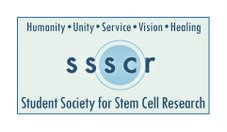September 19, 2007
Testes May Prove Fertile Source of Stem Cells
Tracking down powerful adult stem cells in mouse testes may benefit
humans, too
By JR Minkel
E-mail Print RSS StumbleIt
Image: © ISTOCKPHOTO.
STEM CELLS, IF NOT SUNSHINE: Stem cells extracted from mouse testes
grew into other tissues such as blood vessels when injected into
mouse embryos, suggesting that human males might have similar cells,
a new study finds.
Researchers say they have found a way to pluck out a potent type of
stem cell from the testes of adult mice and transform it into other
kinds of tissue, including heart muscle and blood vessels.
The result—the second such finding in the past year—suggests that
similar cells from human testicles might have similar powers, paving
the way to creating replacement tissue for men who have suffered
damage from heart attacks or other injuries and avoiding some of the
controversy surrounding embryonic stem cells (ESC).
ADVERTISEMENT (article continues below)
Three separate groups reported in June that they had reprogrammed
adult mouse skin cells into a form nearly indistinguishable from
ESCs. But researchers still have to figure out how to prevent those
cells from causing cancer.
Women already have a source of custom stem cells (in principle) in
the form of parthenogenetic embryos grown without sperm.
To give men their fair shake, Shahin Rafii, professor of genetic
medicine at Weill Cornell Medical College in New York City, along
with Memorial Sloan-Kettering Cancer Center medical oncologist Marco
Seandel and their colleagues homed in on a specific group of mouse
spermatogonial progenitors—stemlike cells that give rise to cellular
sperm factories called spermatogonia.
Normally, adult stem cells can only morph into the type of tissue in
which they reside, such as blood, brain or muscle. Rafii says,
however, that cells giving rise to sperm—and, therefore, embryos—
should have the same developmental potential as sperm do. He notes
that testicular and ovarian cancers often produce teratomas,
noninvasive tumors made up of tissues from all three embryonic
layers.
The group first extracted and purified progenitor cells bearing a
protein molecule called GPR125. When transplanted back into the mouse
testis, they produced spermatogonia as expected.
The team then cultured the cells for several months in a bath of
growth-promoting proteins, trying to get the cells to reverse course
and become more like stem cells. When they injected the tissue into
growing mouse embryos, the cells formed teratomas like ESCs do, and
mingled with the blood vessels of the mice, the group reports in this
week in Nature.
Other groups reprogrammed mouse skin cells by inserting four
embryonic genes, some of which are oncogenes (genes that promote
cancer). "To me the therapeutic potential of this is much more
tremendous than to reprogram a skin cell with four oncogenes," Rafii
says. "We reprogram without genetic tweaking."
The challenge, he says, will be figuring out how to force the
transition from progenitors to stem cells, which spontaneously
occurred in about one third of testicular cell lines.
Scientists in Germany last year reported that they could transform
adult mouse spermatogonial progenitors into cells genetically
resembling ESCs by using a different growth medium for just a few
weeks. Without a marker, however, "they have no clue where their
cells came from," Rafii says.
Better markers would be valuable for purifying and studying cells,
says molecular geneticist Takashi Shinohara of Kyoto University in
Japan, who led a group that in 2004 discovered cells similar to ESCs
from newborn mouse testes. But he is skeptical about the newer
studies, which are yet to be confirmed by other labs.
Others are more upbeat, but agree more research is needed. "The
studies seem carefully done to me," says stem cell biologist Sean
Morrison of the University of Michigan Medical School. "I suspect a
lot of people are watching to see if the results will fully hold up
or whether it will turn out to be only partially true."
http://www.sciam.
3EB290B3C5A45982&
more: http://news.
«¤»¥«¤»§«¤»¥«¤»§«¤»¥«¤»«¤»¥«¤»§«¤»¥«¤»§«¤»¥«
¯¯¯¯¯¯¯¯¯¯¯¯¯¯¯¯¯¯¯¯¯¯¯¯¯¯¯¯¯¯¯¯¯¯¯¯¯¯¯¯¯¯¯¯
StemCells subscribers may also be interested in these sites:
Children's Neurobiological Solutions
http://www.CNSfoundation.org/
Cord Blood Registry
http://www.CordBlood.com/at.cgi?a=150123
The CNS Healing Group
http://groups.yahoo.com/group/CNS_Healing
____________________________________________
«¤»¥«¤»§«¤»¥«¤»§«¤»¥«¤»«¤»¥«¤»§«¤»¥«¤»§«¤»¥«
¯¯¯¯¯¯¯¯¯¯¯¯¯¯¯¯¯¯¯¯¯¯¯¯¯¯¯¯¯¯¯¯¯¯¯¯¯¯¯¯¯¯¯¯
Change settings via the Web (Yahoo! ID required)
Change settings via email: Switch delivery to Daily Digest | Switch format to Traditional
Visit Your Group | Yahoo! Groups Terms of Use | Unsubscribe
__,_._,___










